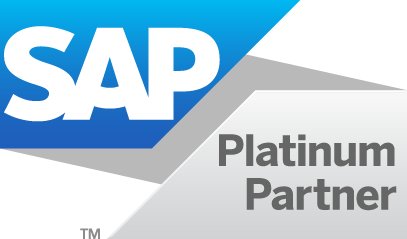SAP Sales Cloud and Microsoft Teams Integration will allow you to gain insight into Customer Relationship Management (CRM) to improve your workplace productivity and remote selling sales figure. It will also help you with real-time sales management and achieve new sales targets.
SAP and Microsoft are teaming up to enhance workspace productivity for their users. To simplify remote selling processes, the companies are launching an embedded in-app integration of SAP Sales Cloud with Microsoft Teams, the hub for team collaboration. With this integration, you can create SAP Sales Cloud appointments with Microsoft Teams that also provide access to the context information from SAP Sales Cloud – scroll down to watch the video on the steps to create an appointment with team collaboration.
The real-time and automated data updates ensure transparency, consistency, and collaboration of opportunities for the sales teams. The integration leads to improved project management and project collaboration. The integration can help you understand the number of deals that your team has successfully closed and the number that are in the pipeline.
3 Key features of the SAP Sales Cloud and Microsoft Teams Integration
1. Simplifying remote selling
The primary objective of the integration is to simplify remote selling. If you look at the sales market in the present day scenario, it is quite clear that remote selling is here to stay. This means you will need to ensure that your team can evaluate the targets and achieve them without being physically present to make the sales. With the help of the integration, you can simplify remote selling in the following manner:
-
Exchange of sales information
When it comes to remote selling, it is necessary to transfer and exchange data continuously on the same platform. But if you had to do it on a non-integrated platform, the data transfer would be time-consuming and not secure. Transfer of sales information on the SAP Sales Cloud and Microsoft Teams Integration platform is secure.
Also, you can be assured that the information will not be lost. With the prompt exchange of information, business decisions can be taken proficiently. Sales information is inclusive of the sales that have been completed and those that are in the pipeline. Your remote teams can then identify the best way to achieve the sales targets in the pipeline. This is necessary to develop a collaborative understanding among your sales teams, spread across the globe.
Also Read: SAP Sales Cloud & Machine Learning
-
Recording customer interaction and meetings
Remote selling means you will have to record the interaction with your customers for further reference. These meetings and exchanges are necessary to understand your sales techniques better and to develop better strategies. You will also need to upload this data to ensure that it is available for further meetings. With the help of this integration, you can easily do it on a single platform.
Thus, all aspects of remote selling are simplified with the help of an integrated platform. You can ensure communication among your teams irrespective of where they are placed globally. Along with that, you can ensure that all information is shared seamlessly among all members of your groups.

2. Empowering the sales teams
The integrated platform is designed to provide you with insight to improve the performance of your sales team. For example, project management helps your team identify the best way to allocate resources. This is necessary to ensure smooth completion of the sales targets at the given time. Data management empowers the sales team as well. With the integrated platform, you can be assured of the following aspects:
- All your team members can access the data at the given time to make prompt decisions to meet sales targets.
- Availability of data is also fundamental to running analytics and managing the data. For instance, when the information regarding sales is uploaded in real-time, multiple sales teams can access this information. This will help them run analytics to identify the causes of sales churn, prevent missing sales targets and improve performance.
- Another aspect of analytics is to evaluate information gathered over a given period. If you have all the information on a single platform, it becomes easier to run analytics. For example, you can compare historical data with real-time data to identify the best way to meet your sales target. All of this is geared to empower your sales team and simplify the process of meeting sales targets.
Improving proficiency requires better communication among sales teams who are placed across the world. This occurs better when there is sharing of information. Along with that, it is essential that the teams can evaluate their performance against historical data. All of this becomes simplified on an integrated platform.
WATCH: Microsoft Teams integration with SAP Sales and Service Core
3. Works as a record-keeping tool
When you evaluate the figure SAP Sales Cloud and Microsoft Teams Integration, the first thing that comes across is that it is an excellent record-keeping tool. Customer Relationship Management or CRM is dependent mainly on how well you have all the records of your customers, and you interact with your customers based on these records. Record keeping needs to be an automated tool that also includes the allocation of administrative tasks that can help to:
-
Reduce the work of your team and improve their proficiency
Say, for instance, multiple teams have to work with a single customer on a similar project. But the project has various aspects. This case requires better project management and better collaboration among the teams working on the multiple aspects of the project. Here the SAP Sales Cloud and Microsoft Teams Integration can be an excellent platform. The sales teams will, of course, look towards customer retention and the sales aspect.
-
Ensure that the deliverables are ready by the given date
If the sales and project management teams are not on the same collaborative platform, it can be highly disjointed for the customer. Hence, there should be a platform where all records regarding CRM and interaction with the customer are maintained. This becomes easier for customers and the teams to ensure that the project is completed per customer requirements. Good collaboration with customers and among teams is essential to ensure that customer churn is reduced.
-
Automate administrative tasks
When it comes to the allocation of administrative tasks, the sales team must collaborate and connect. But with SAP Sales Cloud you can automate these tasks – it reduces the burden on the sales team. The computerized task manager does the workflow on the integrated platform. Automated solutions are necessary to minimize distractions and help the sales teams concentrate on the task at hand. The administrative tasks can now be allocated to the integrated platform and free your team members to pursue the sales.
Also Read: How to Improve Sales Processes with SAP CRM
Bottom line
The objective of the SAP Sales Cloud and Microsoft Teams Integration platform is to help the sales teams improve their performance and the remote sales team to collaborate effectively. Collaboration is necessary to ensure no miscommunications among the teams that allows smooth completion of any sales. In addition, they can make business decisions proficiently and promptly with real-time data.














